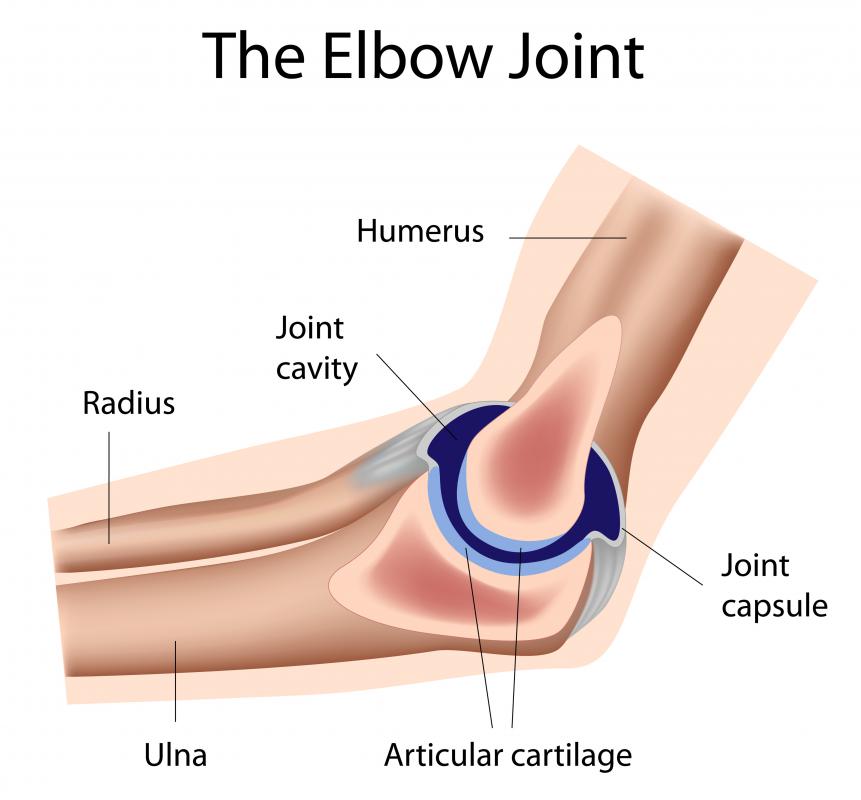At WiseGEEK, we're committed to delivering accurate, trustworthy information. Our expert-authored content is rigorously fact-checked and sourced from credible authorities. Discover how we uphold the highest standards in providing you with reliable knowledge.
What Is an Elbow Splint?
An elbow splint is a durable medical device that may be prescribed by a doctor to treat or manage a number of conditions affecting the elbow. Sometimes referred to as a brace or sling, an elbow splint has a variety of components that may be made in whole or part from plastic, neoprene, Velcro®, elastic or metal. The intended purpose of the splint typically has some bearing on which type is provided or prescribed.
An elbow splint is usually recommended for temporary immobilization and support. Most splints have some sort of hard insert that prohibits movement, but an elbow splint may allow for slight movement without jeopardizing the elbow joint. Some of the conditions for which an elbow splint might be recommended include ulnar nerve entrapment, cubital tunnel syndrome, tendinitis, tennis elbow, or similar orthopedic injuries affecting the elbow joint and surrounding tendons and ligaments.

As is the case with other joint injuries, immobilization allows the injury to begin healing without undue stress that may cause further injury or prohibit healing. An elbow splint can be worn during normal activity or while sleeping as directed by the prescribing physician or physical therapist, but removed during bathing or conscious rest. The typical course of treatment for common elbow injuries is a combination of splinting or bracing and regular non-steroidal anti-inflammatory drugs.

An elbow splint is also commonly recommended for patients with cubital tunnel syndrome. This condition results when the ulnar nerve is compressed by pressure from the surrounding bone. The symptoms of mild to moderate cubital tunnel syndrome include numbness of the arm, including the fourth and little finger, tingling and pain. Regular use of an elbow splint or brace while sleeping may relieve these symptoms and is a method of treatment usually considered before surgery.

Surgery on the elbow is another circumstance that may require an elbow splint. Whether a brace or splint is recommended depends largely on the procedure and the patient’s previous injury or injuries. In many cases, a brace that provides support without immobilizing the elbow is sufficient, but a splint that limits mobility may be required for complete healing from surgery or injury. In many cases, medical insurance will pay for part or all of the cost of durable medical equipment such as a splint. In the event that there is no insurance coverage for such a device, patients can comparison shop for splints and braces, as no prescription is usually required to purchase one.
AS FEATURED ON:
AS FEATURED ON:















Discuss this Article
Post your comments